Chicago has had more than its fair share of big band and jazz dance halls across the city to accommodate nearly everyone’s musical taste. On December 6, 1922—100 years ago—at 62nd Street and Cottage Grove, in the Woodlawn neighborhood, the Trianon Ballroom opened its doors and counted itself among the city’s nightlife destinations.
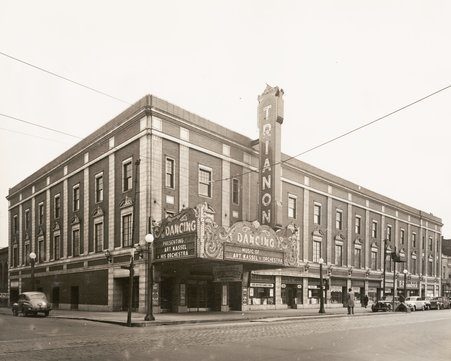
An undated photograph of the exterior of the Trianon Ballroom at Cottage Grove and East 62nd Street. The marquee reads: “Presenting Art Kassel & His Orchestra.” CHM, ICHi-050765
Marketed as the “World’s Most Beautiful Ballroom,” its name and décor were inspired by the Grand Trianon palace at Versailles, commissioned by Louis XIV. The dance hall was an enterprise of brothers Andrew and William Karzas, entrepreneurs in Chicago’s Greek community, who already owned a small chain of movie theaters across the city. When it opened, the Trianon was said to be able to accommodate up to 3,000 dancers at a single time on the main ballroom floor, which measured 100 by 140 feet. The venue also boasted being one of the few air-conditioned facilities in all of Chicago. When all was said and done, the estimated cost of opening the ballroom was $1.2 million (close to $21.3 million in today’s dollars). The venue’s opulence reflected its entertainment, as it brought the most popular names in big band and attracted Chicagoans from every walk of life, from working-class couples to elite socialites. In 1920s Chicago, the Trianon was the place to be.
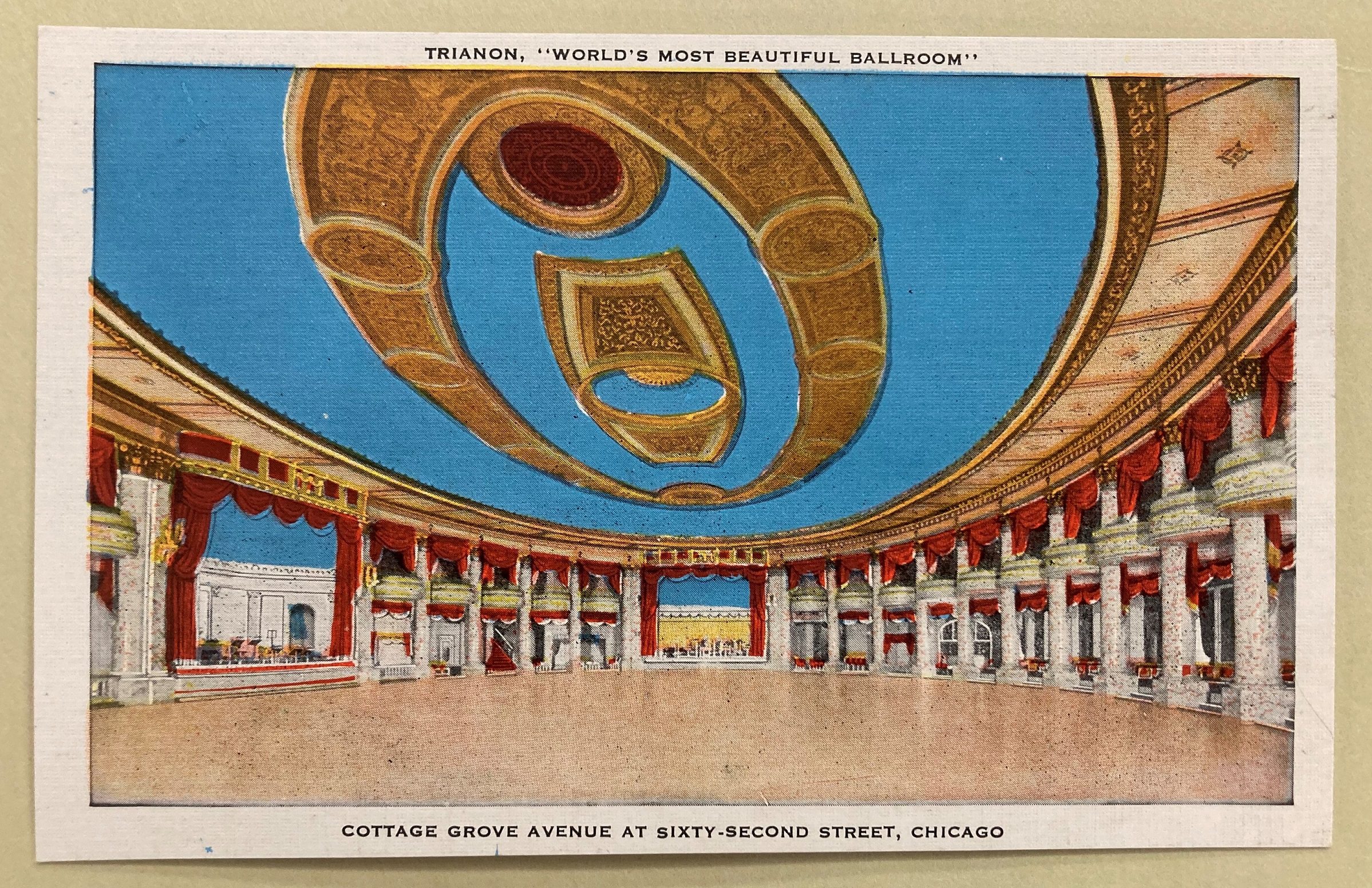
Undated postcard of the “World’s Most Beautiful Ballroom.” Photograph by CHM Staff
To match its aesthetic reputation, the Trianon would be the first venue in the city with a strict dress code—coats and ties for gents, gowns for ladies. To enforce “appropriate” behavior, the venue employed a troop of “floor men” who were tasked with policing the room, keeping an eye out for dancers engaging in lewd or overly physical displays of affection. And for those with insufficient knowledge or two left feet, weekly dance classes were also held on-site. Of course, if patrons wanted to dance the jitterbug or dance along to some jazz, they’d be disappointed to know about the Trianon’s strict policy forbidding both.
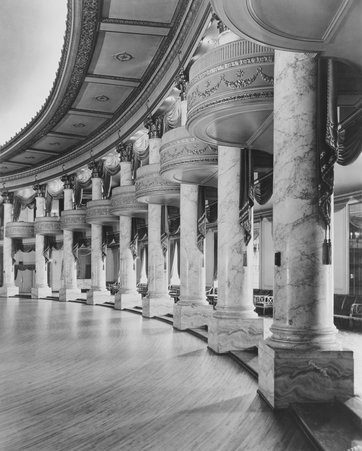
Undated photograph of marble columns around the dance floor in the Trianon Ballroom at Cottage Grove and E. 62nd St. CHM, ICHi-050746
The success of the Trianon would inspire the Karzas brothers to try and catch lightning in a bottle twice with the opening of Trianon’s sister ballroom, the Aragon, four years later in 1926, which still operates to this day. Beyond big band dances, the Trianon would go on to have its own radio station, with the call letters of WMBB standing for “World’s Most Beautiful Ballroom.” The station went on the air in 1925, hoping to capitalize on the good reception the ballroom had received. The airwaves, however, were not meant to be and the station went permanently dark in 1928.
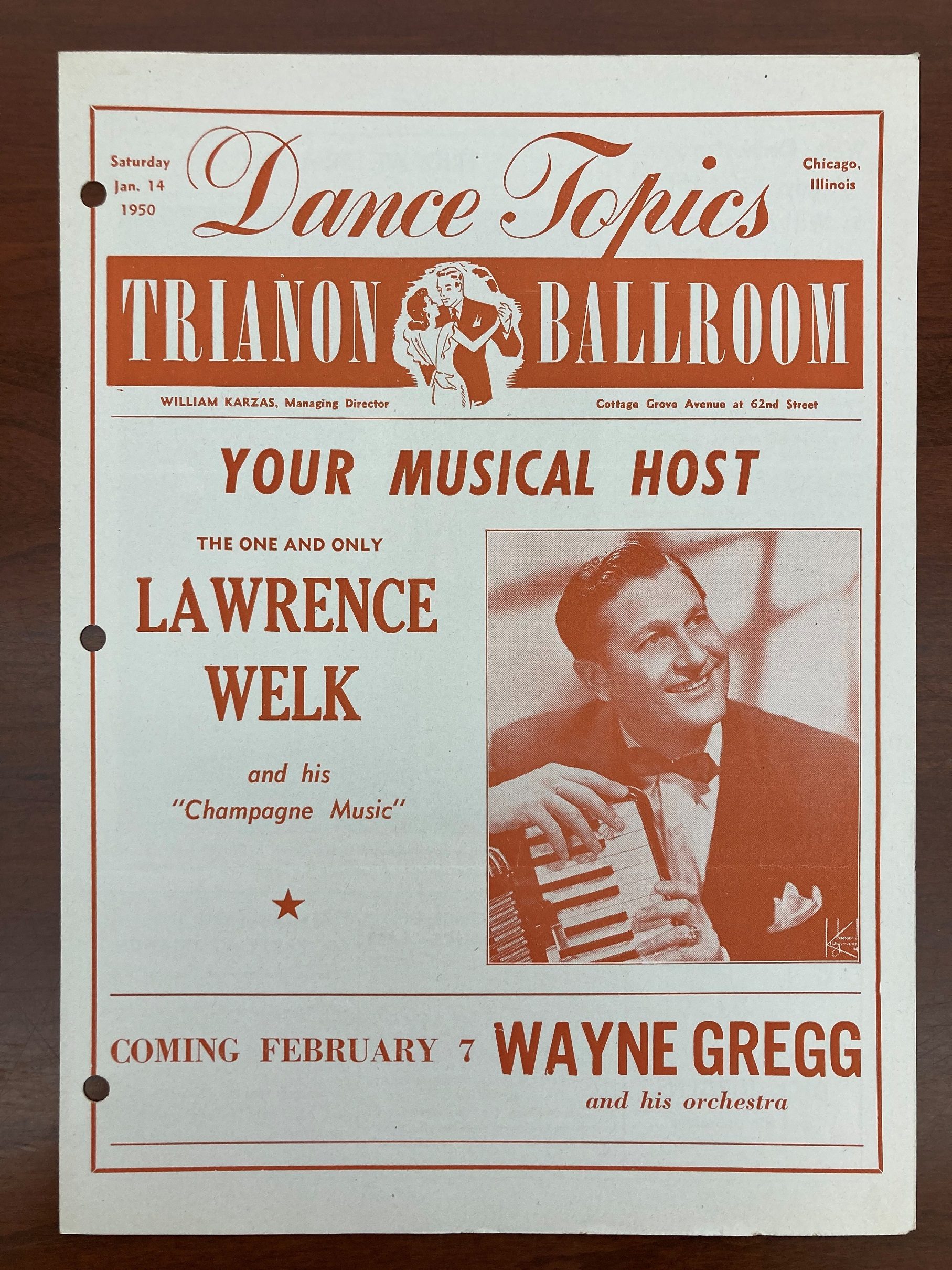
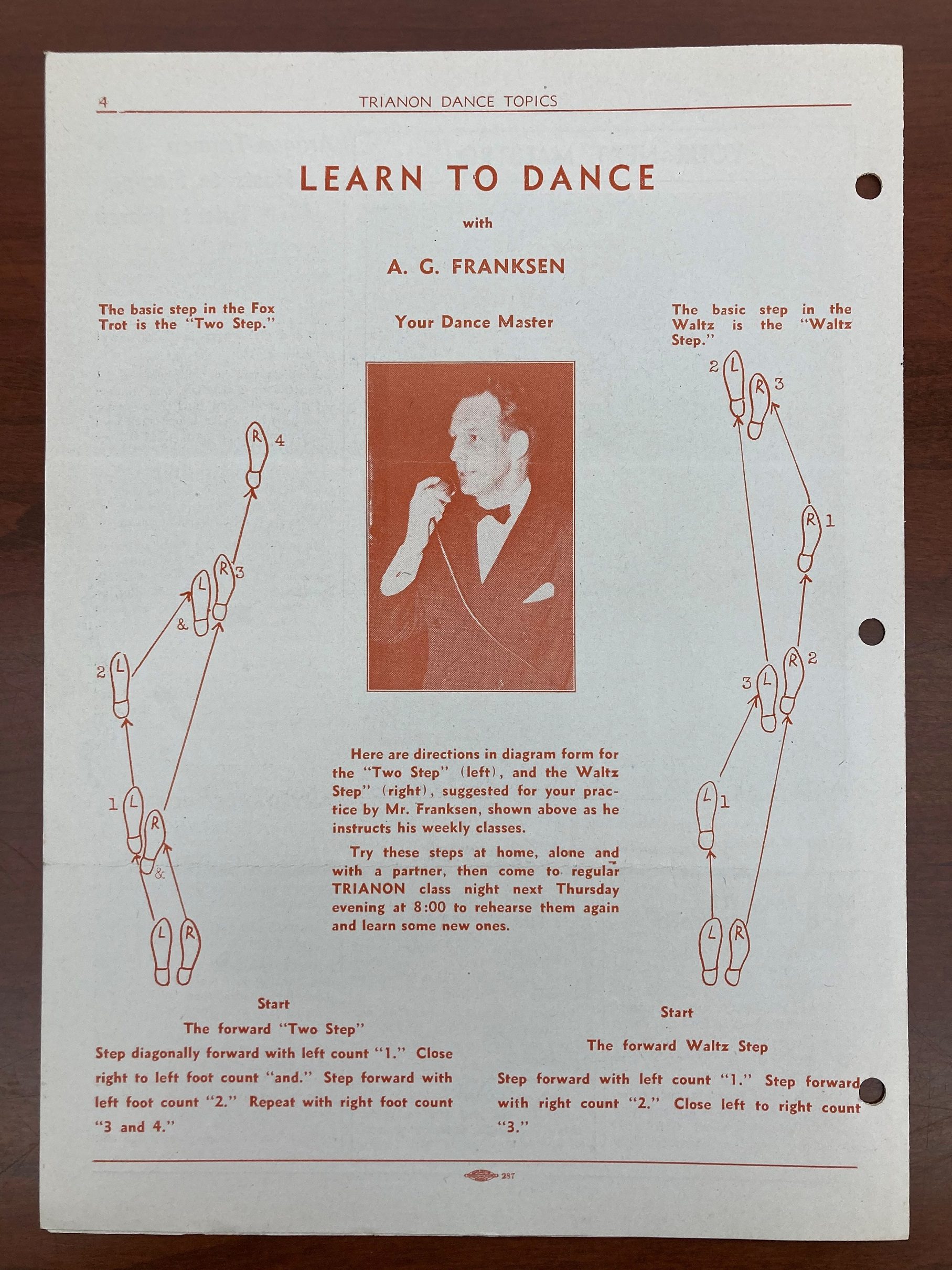
Front and back cover of “Dance Topics, Trianon Ballroom,” featuring Lawrence Welk and the basic steps of the foxtrot, January 14, 1950. Photograph by CHM Staff
Popular as it was, the Trianon was not without its failures, many of which would ultimately lead to its closing in 1958. For one, from the moment the doors opened, the Trianon served a strictly white clientele, which would open the doors for competitors catering to the South Side’s growing Black clientele, a market share that would only grow larger as white flight from the area steadily increased. The declining interest in ballroom dancing certainly didn’t help the once great venue’s ailing status.
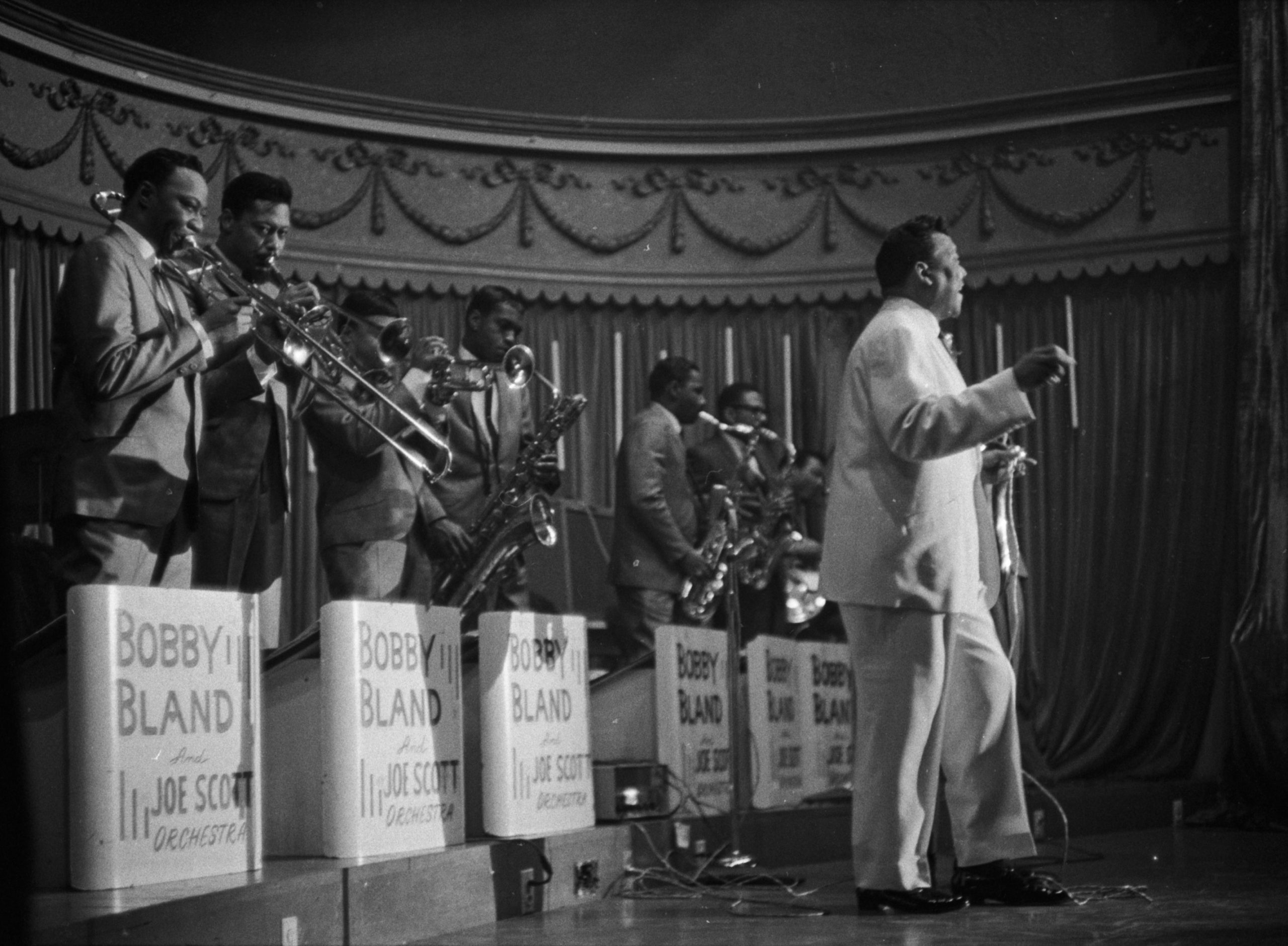
Bobby Bland performing at the Trianon Ballroom, 6201 S. Cottage Grove Ave., Chicago, December 7, 1963. CHM, ICHi-138947; Raeburn Flerlage, photographer
After it closed, there was an effort to revive the dance hall under new management and a new name (now going by El Sid), but the rebrand was ultimately doomed to fail. At some point, as evidenced by photographs in the Museum’s collection, the Trianon opened its stage to Black performers and ensembles, but by then, it was far too late. The building that was home to the venue would ultimately be demolished in 1967 to make room for low-income housing.
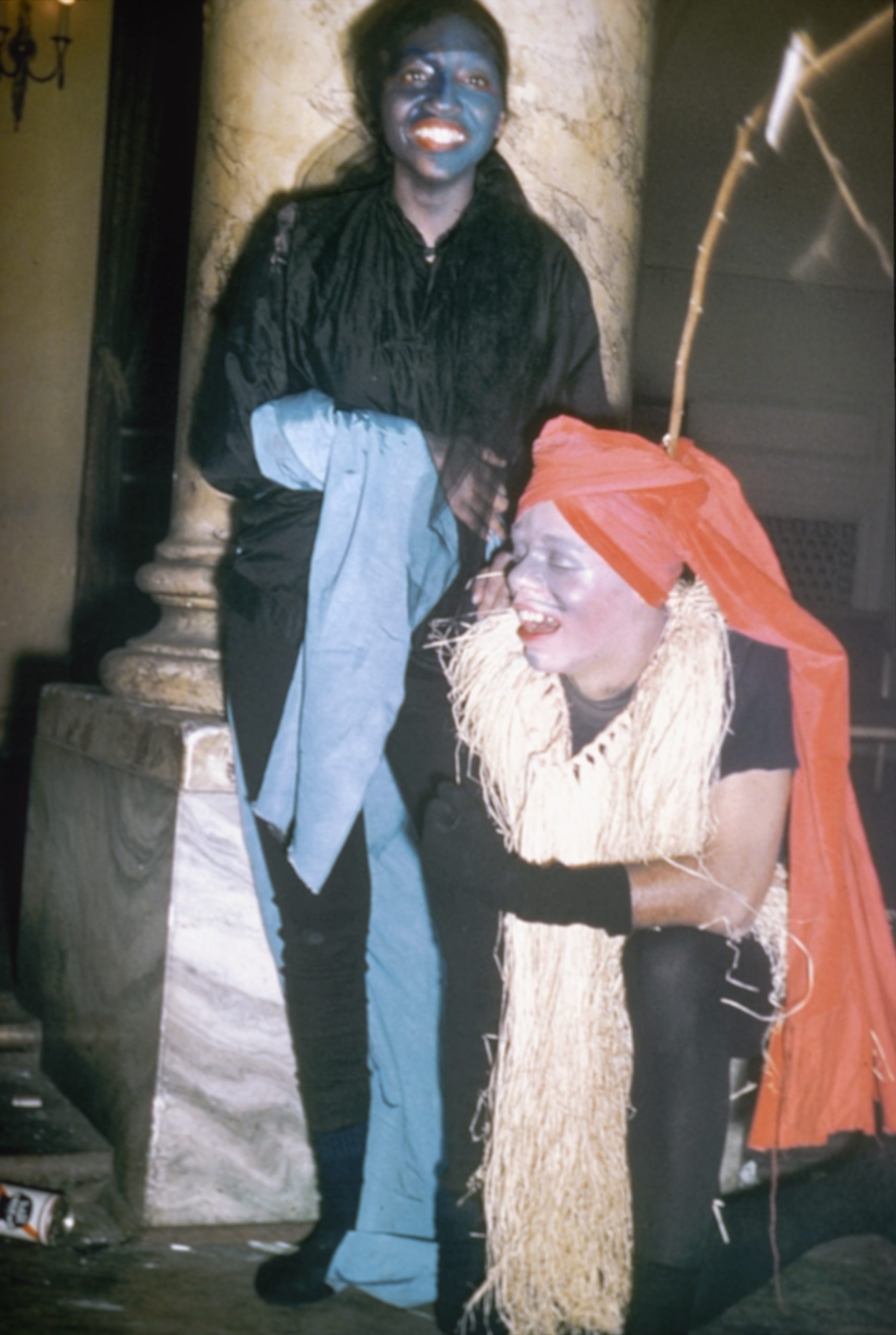
View of guests attending Queen of Finnie’s Annual Masquerade Ball at the Trianon Ballroom, 1958. Guests in attendance included donor James C. Darby and members of Chicago’s gay community. CHM, ICHi-176136; James C. Darby, photographer
The legacy of the Karzas brothers would continue beyond the Trianon and the Aragon, with Andy Karzas, who became the eventual owner and operator of the Aragon by the early 1960s but would go on to be better remembered for his role as an on-air personality and opera virtuoso for WFMT. He passed away in 2011 at the age of 77.
Additional Resources
- Learn more about Chicago’s history of dance halls in our Encyclopedia of Chicago entry.
- Listen to Andy Karzas discuss both the Aragon and the Trianon in a 1963 interview with Studs Terkel.
- See more of James C. Darby’s photographs in our Google Arts & Culture story Drag in the Windy City
- Read the 1973 Chicago History article “The World’s Most Beautiful Ballrooms”
- Visit the Abakanowicz Research Center to see more photographs and ephemera from the Trianon Ballroom